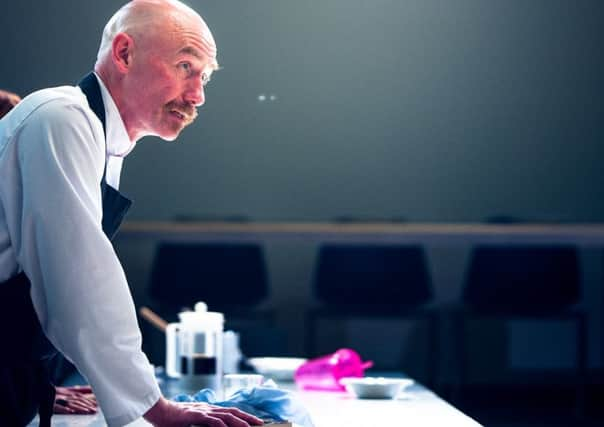Joyce McMillan: In Shakespeare plays does dress matter?


I thought of this woman again, as I sat in the Bonar Hall at Dundee Rep last weekend, watching Stewart Laing’s electrifying new production of Shakespeare’s early and notoriously brutal tragedy Titus Andronicus; a version which is set in the gleaming stainless-steel kitchen of a modern celebrity restaurant, and yields not an inch to those who like to see Shakespeare’s Roman tragedies graced with the odd toga, and perhaps a Doric column or two.
That this kind of radical updating of Shakespeare can create problems and incongruities is obvious. Titus Andronicus does end in a famous banquet scene, but is not set in a kitchen. To relocate the action in this way is therefore to demand the audience move as one onto a metaphorical level, where a restaurant called Rome functions as a symbol for the city and the state; we are what we eat, says Laing’s production, and for us in the west, the world is our brutal, overpriced restaurant. Even once the audience has accepted that kind of shift, a poorly adapted text can jar, disrupt the flow; like the 20th-century Othello whose hero asks his assailants to “put up their bright swords”, while they all point guns at him.
Advertisement
Hide AdAdvertisement
Hide AdYet a radical or updated production can overcome all these obvious pitfalls – as Laing’s Titus, adapted by Philip Howard, certainly does – and still find the idea of Shakespeare as “costume drama” persists, as does the disappointment of some audience members when companies fail to produce a traditional-looking show. For long periods, after all, the detailed recreation and imitation of aristocratic life – Elizabethan, Victorian, Edwardian, 1920s – was one of the key activities of British theatre, a herculean task employing armies of theatrical dressmakers and carpenters. Theatres like the Citizens’, the Royal Lyceum, and Pitlochry Festival Theatre still retain large stores of period costumes, and a substantial capacity to create new ones; and for decades the idea of the lavishly staged costume drama – including Shakespeare, as the jewel in the crown – became so dominant in British theatre that audiences robbed of that kind of spectacle often simply felt that they had not had their money’s worth.
Now of course, this Downton-esque impulse, among British theatregoers, speaks volumes about the relationship between theatre and class. For centuries, its function was mainly aspirational and aristocratic, designed to offer upwardly mobile theatregoers a beguiling glimpse of a world most would never inhabit; and it was Laing himself, back in 2011, who used his powerful Salon Project – in which the entire audience was dressed up in period costume by a backstage army of theatre students – to deconstruct the huge infrastructure of labour and support that goes to create that vision of the aristocratic drawing-room, in the theatre as in life.
It follows that if contemporary directors like Laing see Shakespeare as a living playwright and poet, they must free him from any existing infrastructure of assumptions about how his plays should look and sound, to make them afresh for our time. Sometimes these reimaginings work brilliantly, sometimes they fail. What they always do, though, is challenge the deadly process by which a great playwright like Shakespeare becomes a mere museum-piece; used to reinforce existing assumptions about culture, art and power, rather than – like Laing’s brilliant and shocking Titus – slaughter them, slice them into pieces, and start all over again.
Titus Andronicus is at Dundee Rep until 25 April